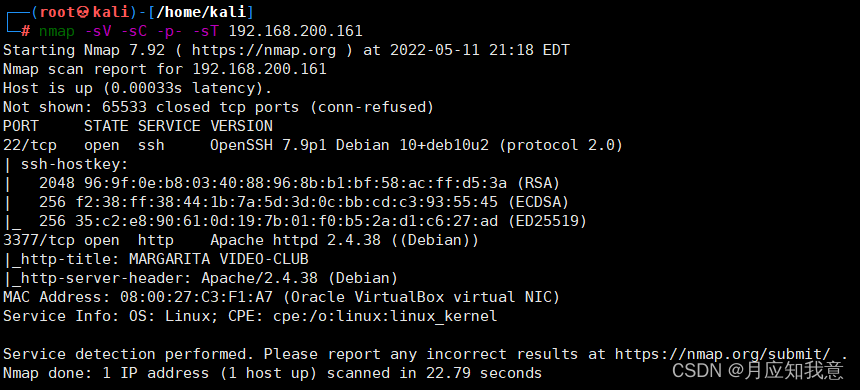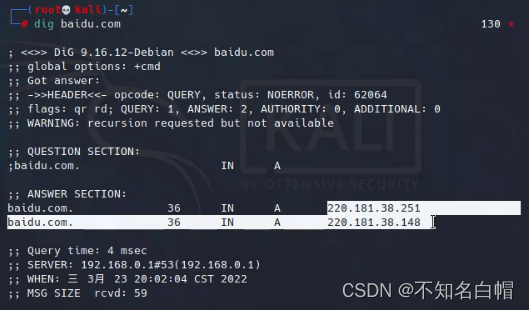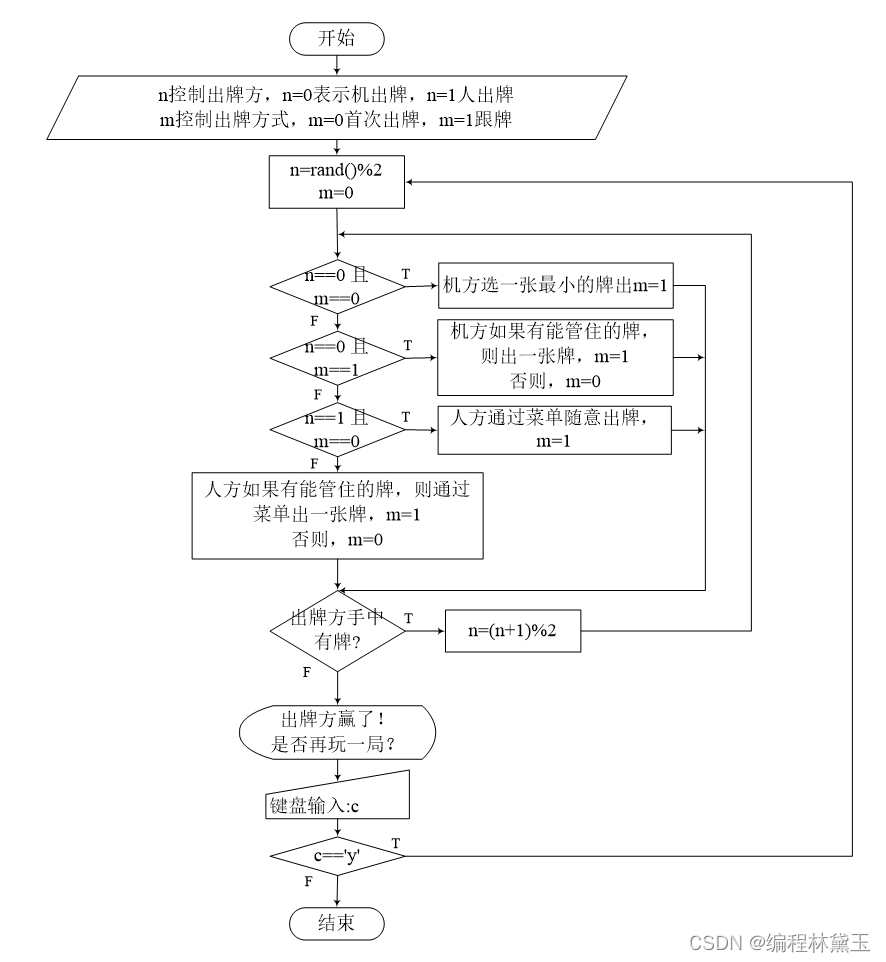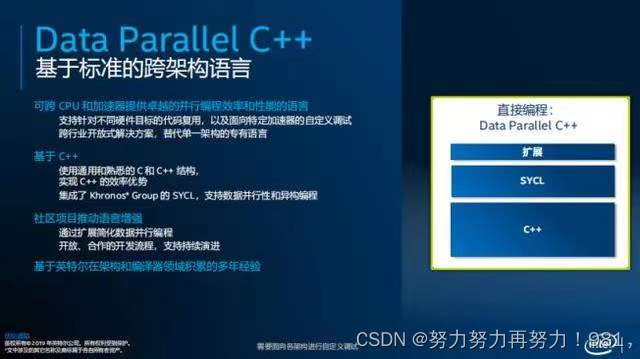当前位置:网站首页>AQS details
AQS details
2022-07-06 14:12:00 【Thorn in the moonlight tonight】
AQS
Basic introduction
attribute
AQS Basically, it is realized by four attributes :
- head: Head node , After all, it's a queue , There must be a head node ;
private transient volatile Node head;
- tail: Tail node , Two way queue , There must be a tail node :
private transient volatile Node tail;
- state: state , Lock it , There must be a lock state ,0 Indicates that no thread acquires the lock , Not 0 Indicates the number of times to acquire the lock ( Reentry or shared lock ):
private volatile int state;
- exclusiveOwnerThread: Thread getting lock , When re entering the lock , Is it necessary to determine which thread obtained the lock ? This attribute is in the parent class (AbstractOwnableSynchronizer) Inside :
private transient Thread exclusiveOwnerThread;
Concept
AQS It's actually a blocking queue , Then it is bidirectional , The main function is to acquire locks by multiple threads , The thread that fails to acquire will become a node (Node) Enter this blocking queue , The thread blocks first and then attempts to acquire the lock . look down Node The data structure of :
static final class Node {
// share Node( Read the lock )
static final Node SHARED = new Node();
// Monopoly Node( Write lock )
static final Node EXCLUSIVE = null;
// Several state constants
/** waitStatus value to indicate thread has cancelled */
static final int CANCELLED = 1;
/** waitStatus value to indicate successor's thread needs unparking */
static final int SIGNAL = -1;
/** waitStatus value to indicate thread is waiting on condition */
static final int CONDITION = -2;
/**
* waitStatus value to indicate the next acquireShared should
* unconditionally propagate
*/
static final int PROPAGATE = -3;
// Node wait state , The above state constants will be used
// When it comes to CANCELLED when , It means giving up robbing the lock ( Timeout can be achieved )
volatile int waitStatus;
// Front node , Two way linked list
volatile Node prev;
// Post node , Linked list
volatile Node next;
// Threads , Because in essence, threads rob locks , So nodes are encapsulated by threads
volatile Thread thread;
// The next node of the conditional queue , This is not what the mainstream needs to pay attention to
Node nextWaiter;
...
// Other methods are not important
}
You can see ,Node In fact, there are only four attributes : Two linked list attributes (prev、next)、 A thread itself (thread)、 A state (waitStatus), The first three seem easy to understand , It seems that the focus is on state attributes .
use ReentrantLock see AQS Realization
AQS Is an infrastructure , So in fact, in daily use , We seldom use it directly , Unless we need custom locks , Generally, when we need to use locks , Can use directly JDK It has helped us achieve ReentrantLock, Let's take an example :
public class ProductServiceImpl {
private ReentrantLock lock = new ReentrantLock();
public void subSafety(int num){
lock.lock();
try {
// do sub
}finally {
lock.unlock();
}
}
}
This ensures that only one thread will do inventory reduction at the same time , And let's see ReentrantLock Realize the source code of .
ReentantLock Get the lock
ReentrantLock Is to use its inner class Sync Realized , Its construction method can only generate one Sync object
public ReentrantLock(boolean fair) {
sync = fair ? new FairSync() : new NonfairSync();
}
Then look at the locking method (lock) Source code , Take the fair lock (FairSync) For example , The intermediate steps are omitted , Look directly at AbstractQueuedSynchronizer#acquire Method , be-all AQS This method should be called to implement the locking function
- AbstractQueuedSynchronizer#acquire
public final void acquire(int arg) {
if (!tryAcquire(arg) &&
acquireQueued(addWaiter(Node.EXCLUSIVE), arg))
selfInterrupt();
}
tryAcquire Method means to try to acquire the lock , Got the return true, stay AQS This method is not implemented , Subclasses need to implement themselves , This also reflects the idea of object-oriented programming , look down FairSync in tryAcquire Come true
- ReentrantLock#FairSync#tryAcquire
protected final boolean tryAcquire(int acquires) {
final Thread current = Thread.currentThread();
// Get the status of the lock
int c = getState();
// 0 Indicates that no thread has acquired the lock
if (c == 0) {
// The realization of fair lock : If someone is in the queue, just line up
if (!hasQueuedPredecessors() &&
// CAS Attempt to acquire lock
compareAndSetState(0, acquires)) {
// Success will AQS The exclusive thread in is set to itself , It means I grabbed the lock
setExclusiveOwnerThread(current);
return true;
}
}
// Reentrant lock ( Add the number of times to obtain the lock, and it returns )
else if (current == getExclusiveOwnerThread()) {
int nextc = c + acquires;
if (nextc < 0)
throw new Error("Maximum lock count exceeded");
setState(nextc);
return true;
}
// Neither of the above two failed
return false;
}
The code for grabbing the lock is very simple , And the logic is clear , There's no need to say more , It should be noted that : After reading the source code implementation of unfair lock, you will find , Unfair lock is missing !hasQueuedPredecessors() Judge , in other words , The unfairness of an unfair lock is reflected in the fact that the first time you rob a lock, you don't care whether there are nodes in the queue , Try to grab the lock directly , If you can't grab it, you will queue up in the queue , It's very clear to see the source code .
go back to AbstractQueuedSynchronizer#acquire Method :
public final void acquire(int arg) {
if (!tryAcquire(arg) &&
acquireQueued(addWaiter(Node.EXCLUSIVE), arg))
selfInterrupt();
}
Will find , If tryAcquire(arg) Method grab the lock ( return true) That's the end , But if you don't grab the lock, the normal logic is to suspend the thread , Then add to the queue , look down addWaiter(Node.EXCLUSIVE) Method , This is in AQS Implemented in :
private Node addWaiter(Node mode) {
// Generate the current thread Node
Node node = new Node(Thread.currentThread(), mode);
// Try the fast path of enq; backup to full enq on failure
Node pred = tail;
if (pred != null) {
node.prev = pred;
// Add to the end of the team
if (compareAndSetTail(pred, node)) {
pred.next = node;
return node;
}
}
// Notice the logic that the code can get here :
// The queue is empty || CAS Failed to join the team
// So the function of this method is to initialize the queue and spin into the queue ( If you fail to join the team once, you will join it several times )
enq(node);
return node;
}
The code logic is very simple , It's generation Node Then the team , But you need to pay attention to enq Method , Take a look at the source code .
private Node enq(final Node node) {
// The spin
for (;;) {
Node t = tail;
// The queue is empty
if (t == null) { // Must initialize
// Generate an empty Node, And then cycle again
if (compareAndSetHead(new Node()))
tail = head;
} else {
// The normal logic is here
node.prev = t;
// You have to join the team to exit the spin
if (compareAndSetTail(t, node)) {
t.next = node;
return t;
}
}
}
}
This method only needs to remember the conditions that can run to this method ( The queue is empty or failed to join ) It is easy to understand the logic of this method , Note that when the queue is empty , Mr. Hui becomes an empty Node As the first node , We call this node sentinel node , This is still very important .
And then back to acquire Method , look down acquireQueued Method ,addWaiter The method has already thread Method queue , that acquireQueued The function of the method should be to suspend the thread .
// there node It's the one who joined the team from above node
final boolean acquireQueued(final Node node, int arg) {
boolean failed = true;
try {
boolean interrupted = false;
// Dead cycle
for (;;) {
// This is to get the front node
// Here is what I said earlier , Queued head Not a real head , It's the sentinel node , So we need to get the front node of this node and compare
final Node p = node.predecessor();
// p == head Explain now node It's the head node , You can try to acquire the lock directly , Call again tryAcquire
if (p == head && tryAcquire(arg)) {
// This indicates that the lock has been obtained , This method will node Medium thread Set to null
setHead(node);
p.next = null; // help GC
failed = false;
return interrupted;
}
// There are two possibilities for the code here :
// node It's not a head node || The lock failed
if (shouldParkAfterFailedAcquire(p, node) &&
parkAndCheckInterrupt())
interrupted = true;
}
} finally {
if (failed)
cancelAcquire(node);
}
}
This method involves the sentinel node mentioned earlier , The code logic is relatively simple , Is that if node If it is the first node ( It can't be said to be a header node ) Just try to get the lock , What is difficult to understand is the following handling method of lock acquisition failure shouldParkAfterFailedAcquire, If this method returns true, That would call parkAndCheckInterrupt Method to suspend the thread .
// pred This is it node The front node of
private static boolean shouldParkAfterFailedAcquire(Node pred, Node node) {
int ws = pred.waitStatus;
// Node.SIGNAL The state is the state in which the lock can be obtained , Suspend the thread directly
if (ws == Node.SIGNAL)
return true;
// Greater than 0 Indicates that this node has been abandoned , Don't get locks anymore
if (ws > 0) {
do {
// Because the front node is no longer awakened to acquire the lock , therefore node You need to cycle to find a normal front node
node.prev = pred = pred.prev;
} while (pred.waitStatus > 0);
pred.next = node;
} else {
// node When joining the team, the state is 0, So set it to Node.SIGNAL, Wakeable state
// The first time to enter this method should be to go here first , Then cycle into (acquireQueued There is a dead cycle in the method )
compareAndSetWaitStatus(pred, ws, Node.SIGNAL);
}
return false;
}
The function of this method is whether the thread should be suspended , The return result is a boolean value , You need to know a concept before looking at this method : The wake-up of the node in the queue is completed by the front node , When the front node releases the lock, it will wake up the first node to try to obtain the lock .
Come here ReentrantLock The source code of the lock acquisition part is finished , In fact, I just did a few things : Attempt to acquire lock 、 Fail to generate node The team 、 If the team is empty, create a short node ( The sentinel node )、 Suspend the thread and wait for it to wake up .
ReentrantLock Release the lock
Understand the process of obtaining the lock , It's easy to release the lock , Don't look at it step by step , Look directly at AbstractQueuedSynchronizer#release Methods!
- AbstractQueuedSynchronizer#release
public final boolean release(int arg) {
if (tryRelease(arg)) {
Node h = head;
if (h != null && h.waitStatus != 0)
unparkSuccessor(h);
return true;
}
return false;
}
A routine similar to obtaining locks , Then look at it. ReentrantLock#tryRelease Method .
- ReentrantLock#tryRelease
protected final boolean tryRelease(int releases) {
// This is the state of lock ,0 Indicates that it has not been obtained ,>0 Indicates the number of times obtained
// This is release , So subtract the number of releases
int c = getState() - releases;
// Of course, your lock can only be released by yourself
if (Thread.currentThread() != getExclusiveOwnerThread())
throw new IllegalMonitorStateException();
// Release results :true Indicates complete release ,false It means that it has not been completely released
boolean free = false;
// When the release result is 0 It means that the lock is completely released , Otherwise, only a part of it will be released ( Reentry multiple times )
if (c == 0) {
free = true;
setExclusiveOwnerThread(null);
}
setState(c);
return free;
}
The logic of this method is too clear , I don't even know what to say , Back to release Method , Look at the operation after the lock is released successfully , For example, wake up subsequent nodes
public final boolean release(int arg) {
if (tryRelease(arg)) {
// The successful release of the lock is here
Node h = head;
// Head node , The head node is the sentinel node !
if (h != null && h.waitStatus != 0)
unparkSuccessor(h);
return true;
}
return false;
}
Let's emphasize here : The head node is the sentinel node , It's an empty node , Not our actual node ! Then look at unparkSuccessor Method , This method is important to wake up the post node
// there node It's the head node
private void unparkSuccessor(Node node) {
int ws = node.waitStatus;
if (ws < 0)
compareAndSetWaitStatus(node, ws, 0);
// see , The actual operation is the post node of the head node
Node s = node.next;
// If this node cancels the wait
if (s == null || s.waitStatus > 0) {
s = null;
// Start from the tail node to find , Look backwards
for (Node t = tail; t != null && t != node; t = t.prev)
if (t.waitStatus <= 0)
s = t;
}
if (s != null)
// Wake up the
LockSupport.unpark(s.thread);
}
stay AQS in , Many lookups in the queue are reverse lookups starting at the end , As for the reason , The information checked on the Internet says it is related to concurrency , I don't quite understand .
Come here AQS The whole implementation is finished , It's not much , And the code logic is very clear and simple , There seems to be no summary .
边栏推荐
- JS several ways to judge whether an object is an array
- Hackmyvm target series (7) -tron
- 扑克牌游戏程序——人机对抗
- SRC挖掘思路及方法
- 【头歌educoder数据表中数据的插入、修改和删除】
- Experiment five categories and objects
- 7-15 h0161. Find the greatest common divisor and the least common multiple (PTA program design)
- 【黑马早报】上海市监局回应钟薛高烧不化;麦趣尔承认两批次纯牛奶不合格;微信内测一个手机可注册俩号;度小满回应存款变理财产品...
- C language file operation
- 记一次,修改密码逻辑漏洞实战
猜你喜欢

Hackmyvm target series (6) -videoclub

2. First knowledge of C language (2)

附加简化版示例数据库到SqlServer数据库实例中

Internet Management (Information Collection)

扑克牌游戏程序——人机对抗

UGUI—Text

《英特尔 oneAPI—打开异构新纪元》

Package bedding of components

攻防世界MISC练习区(gif 掀桌子 ext3 )
![[dark horse morning post] Shanghai Municipal Bureau of supervision responded that Zhong Xue had a high fever and did not melt; Michael admitted that two batches of pure milk were unqualified; Wechat i](/img/d7/4671b5a74317a8f87ffd36be2b34e1.jpg)
[dark horse morning post] Shanghai Municipal Bureau of supervision responded that Zhong Xue had a high fever and did not melt; Michael admitted that two batches of pure milk were unqualified; Wechat i
随机推荐
It's never too late to start. The tramp transformation programmer has an annual salary of more than 700000 yuan
7-7 7003 组合锁(PTA程序设计)
【VMware异常问题】问题分析&解决办法
XSS unexpected event
Meituan dynamic thread pool practice ideas, open source
Detailed explanation of network foundation
内网渗透之内网信息收集(一)
MSF generate payload Encyclopedia
HackMyvm靶機系列(3)-visions
安全面试之XSS(跨站脚本攻击)
DVWA (5th week)
7-5 走楼梯升级版(PTA程序设计)
3. Input and output functions (printf, scanf, getchar and putchar)
7-8 7104 约瑟夫问题(PTA程序设计)
实验六 继承和多态
Wechat applet
记一次猫舍由外到内的渗透撞库操作提取-flag
TypeScript快速入门
Strengthen basic learning records
xray與burp聯動 挖掘